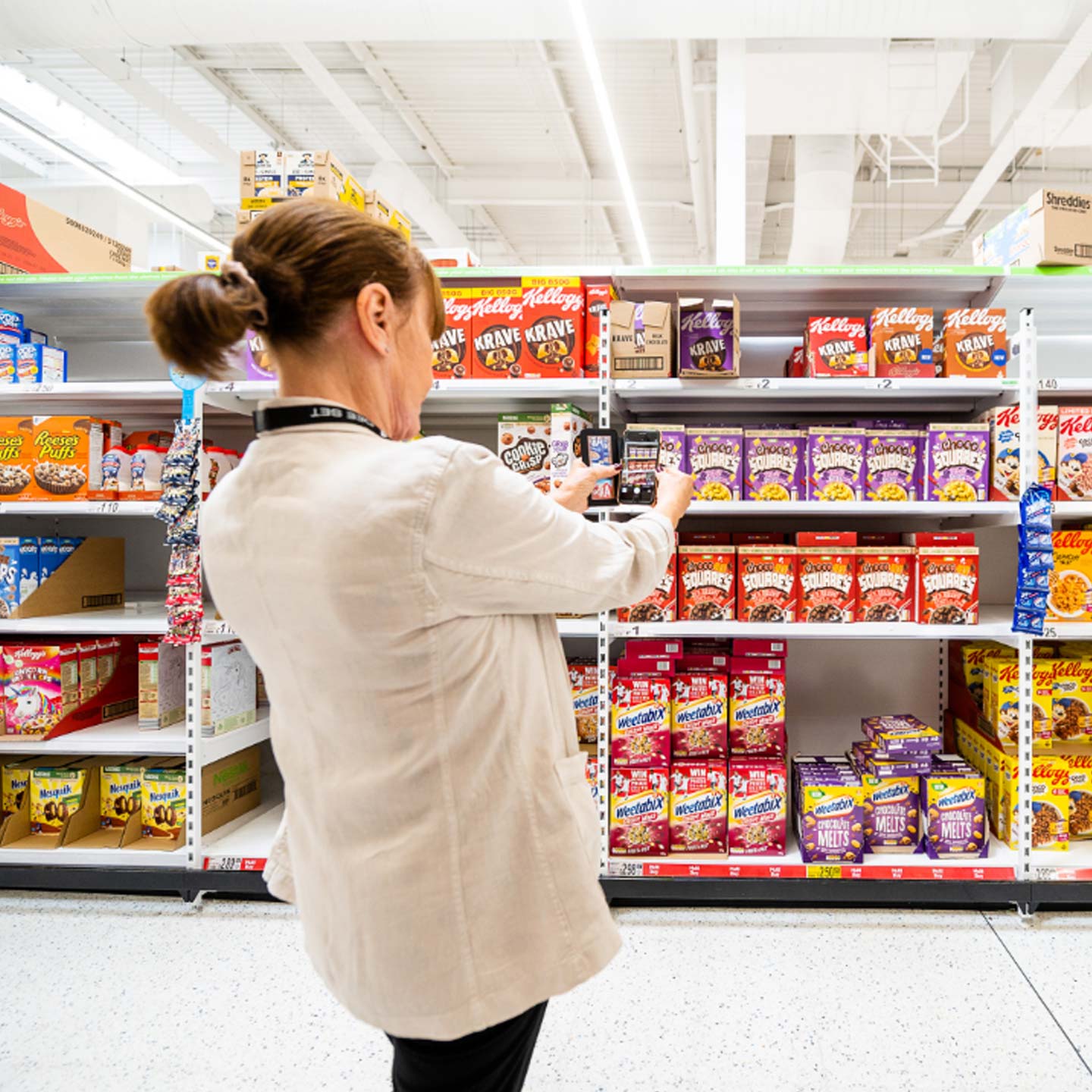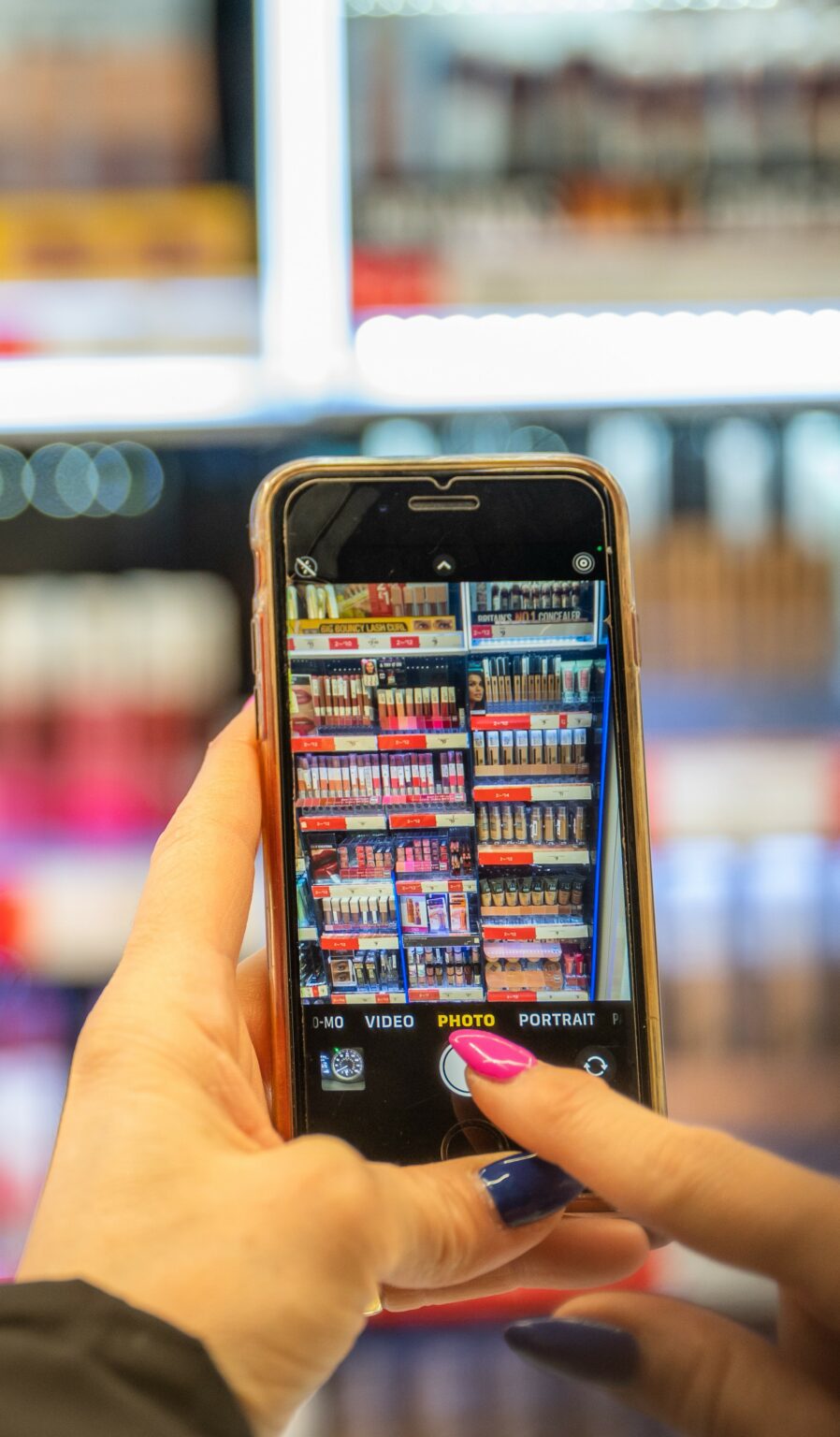

That's why we created our cutting-edge image recognition for retail software, Vision, which streamlines and transforms your operations, guaranteeing your products achieve peak visibility and compliance in-store.
Want to find out more about how our powerful image recognition tech works? Get in touch today!
In retail, visibility is everything - that could be through FSDU's or a fully stocked shelf. Our image recognition technology is specifically designed for retail. It provides detailed insights into your share of shelf, enabling you to optimise product placement and improve your competitive position. Whether you’re benchmarking against competitors or the entire shelf, if you're looking for the best stock tracking software, Vision offers the precision you need to succeed.
Maintaining planogram compliance across multiple locations can be challenging. Using Vision, Dee Set makes this task simple and efficient. Our stock-tracking software ensures that your products are placed correctly according to your planograms, allowing for consistent execution across all store locations.
Our Vision software is powered by data-driven retail analytics that empower your team to take immediate action through the power of actionable data. By analysing shelf images and combining them with tangible sales data, our image recognition technology provides the clarity needed to make informed decisions, enhancing your overall retail performance.


Shelf-space. Positioning. Visibility. Product selection.
A lot of thought and expertise goes into maximising your sales, and it can be difficult to juggle so many plates:
We can take this stress away and let you focus on other, more important matters. We combine big brains with big data to make sure the right improvements happen:
60,000 photos per week for client reporting
40,000 merchandising hours completed per week
There’s never been a better time to get on the Dee Set train!
Vision is designed to reduce the time your teams spend on routine in-store tasks, freeing them up to instead focus on strategic initiatives. By automating AI image recognition and integrating this technology with your sales alerts, our software enhances productivity and allows your teams to achieve more during each store visit.
Ready to get started with our innovative image recognition tools? Reach out to our team to book a Vision demo today!
At Dee Set, we know that every retail visit counts. Our image recognition technology helps you maximise your field marketing ROI by ensuring that your team’s efforts are always aligned with your business objectives. With quick image processing and actionable insights, Vision turns every store visit into an opportunity for growth.
Vision is an integral part of our comprehensive approach to retail success. By harnessing the power of AI-driven image recognition and real-time data insights, Vision keeps you steps ahead of the competition. Whether you need to ensure promotion compliance, optimise shelf space, or increase productivity, Vision delivers the results your business needs.
Take the first step towards retail excellence with the best stock tracking software available: Book a demo today to discover how Vision can revolutionise your business operations.

The setup time for Vision is approximately two weeks, utilising our advanced synthetic image recognition process.
Absolutely. Vision can be integrated into your existing systems, either as part of a broader Perform package or as a stand-alone solution.
No, Vision supports unlimited users, making it a flexible solution for teams of any size.
There is no limit on the number of products Vision can process. Our flexible pricing options can accommodate businesses of all shapes and sizes.
Vision is designed to work seamlessly with Perform for enhanced functionality, but it can also be used independently via an API for bespoke integrations.
While Vision is primarily designed for brands, retailers can also benefit from its powerful features. Contact Dee Set to learn more about how Vision can be tailored to your retail operations.